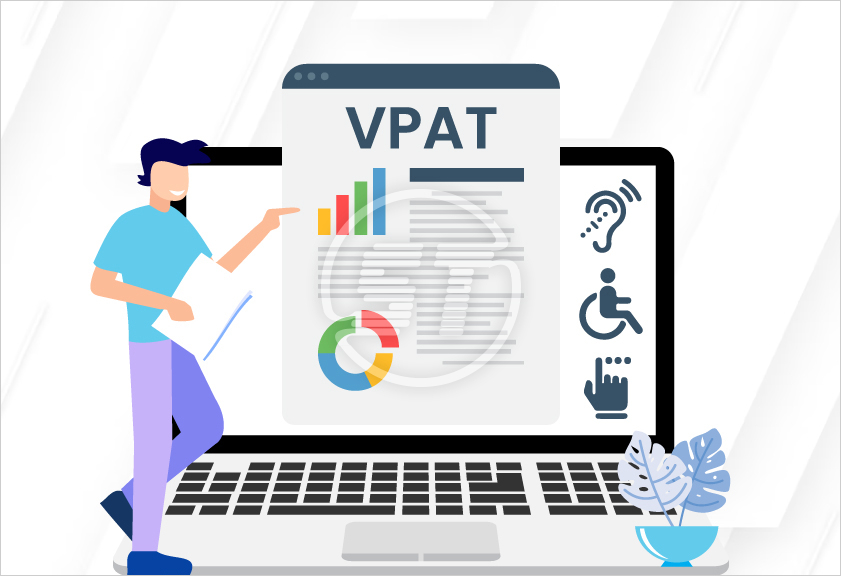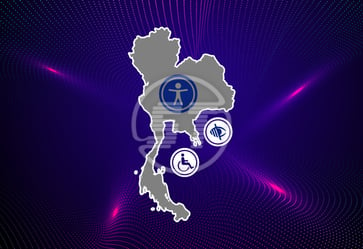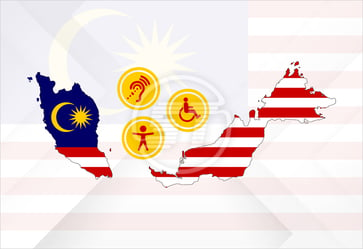VPAT (Voluntary Product Accessibility Template) or ACR (Accessibility Conformance Report) has become a global reporting format for buyers and sellers to display the accessibility conformance of their ICT products and services. The VPAT includes all the leading and important standards’ latest editions such as Section 508, EN 301 549, and WCAG. The INT edition of VPAT contains all these three accessibility standards.
The idea behind VPAT development was to make it easy for procurement agencies to make informed decisions to buy the right information and communication technology (ICT) products and services.
Since there are four editions of VPAT available, it is mandatory to understand what major differences they have, and which edition is applicable to ICT products.
You may also like: Importance of VPAT
This article will help you understand the required information on all these four VPAT editions. Read along!
VPAT 2.5 with eminent international accessibility standards
ITI maintains the relevancy of all its editions by updating them regularly as per the global development demand in ICT.
Though the original essence of VPAT is consistent throughout its all versions, the latest version VPAT 2.5 has a column for recording conformance to each provision of a standard relevant to a product or service. Vendors declare their level of conformance by mentioning any of these options:
Supports, partially supports, does not support, or not applicable.
However, the ‘partially supports’ option was replaced by ‘supports with exceptions’ in VPAT 2.3 on the popular demand of the U.S. Access Board. Also, version 2.5 incorporates a column for giving detailed explanations for each reported conformance level.
The guidelines included in all the four editions of VPAT are:
- VPAT Section 508 – It is revised Section 508 standards mainly used by U.S. Federal agencies. WCAG 2.0 guidelines are included in the VPAT 508 edition.
- VPAT EN 301 549 – The European Union’s accessibility requirements for ICT procurement are covered in this VPAT edition. WCAG 2.1 standards are incorporated in the EU edition.
- VPAT WCAG – This VPAT edition contains WCAG 2.2, or ISE/IEC 40500 guidelines and it is used by a major part of the world to maintain VPAT’s requirements.
- VPAT INT – Includes all the above three standards.
You may also like: Website accessibility audit
Difference among all the four renowned accessibility standards VPAT report:
WCAG and INT edition:
- Instructions and applicable standards are updated in version 2.5.
- The 9 new criteria have been added to the WCAG tables, and it is notified that 4.1.1 Parsing is obsolete in WCAG 2.2. (VPAT 2.5)
- Indicated changes to WCAG 2.0 and 2.1 that 4.1.1 Parsing automatically “Supports”. (This change is updated in EU and Section 508 edition as well for VPAT 2.5)
- 2.1.1 Keyboards and 2.1.4 Character Key Shortcuts are added for closed products and this information is added in 5.1.3.1 through 5.1.3.16’ for the provisions that cover software requirements for these closed products. (VPAT 2.5)
- 4.1.2 Name, Role, Value changed from ‘Not required’ to ‘Does not apply’ for 11.4.1.2.2 (for closed products). (VPAT 2.4 Rev update)
- VPAT 2.3 added an explanatory note informing that WCAG 2.1 usage is optional.
EU edition:
- There are various additions/changes in WCAG success criteria 3.1.5, 3.1.6, 3.2.5, 3.3.5, 3.3.6 (Level AAA) in VPAT 2.5.
- Fixed typo in instructions (VPAT 2.5).
- EN 301 549 Chapter 10 name changed from ‘non-web’ to ‘non-web documents’ in the instructions. (Update happened in VPAT 2.4 Rev)
- VPAT 2.3 changed WCAG references to WCAG 2.x and removed references to 508 standards. And best practices for authors were added.
Section 508 edition:
- It has only a 4.1.1 Parsing update for the VPAT 2.5 version.
- In VPAT 2.3, WCAG 2.1 references were removed and links to revised 508 standards were added.
There are some other updates as well. Read detailed information on changes and updates in different versions of VPAT.
Key Differences Between VPAT Editions
| Aspect | VPAT 508 | VPAT EU | VPAT WCAG | VPAT INT |
|---|---|---|---|---|
| Focus | U.S. federal compliance | EU accessibility standards | Global web standards | International compliance |
| Standards | Section 508, WCAG 2.0 A/AA | EN 301 549, WCAG 2.1 | WCAG 2.0/2.1 | Section 508, EN 301 549, WCAG 2.1 |
| Best For | U.S.-focused organizations | EU-focused organizations | Web content creators | Multinational organizations |
So, all four editions of VPAT are different in terms of WCAG versions they include, and the other updates happened gradually. However, they all contain,
- Mandatory instructions and best practices to use VPAT service mark to produce consistent and complete reporting of ICT products and services.
- A product description field describe correct and concise product description.
- Evaluation methods used field mention methods that are utilized to create and test ICT product’s accessibility.
- Notes field provides the report and additional details about testing and evaluation methods.
- Comes in a Microsoft Word file that can be reproduced and used in other formats as well.
- Definition language is consistent for the term “Not Evaluated” in VPAT 2.5.
- VPAT 2.3 changed “date” to “report date”, made standard citations across the tables, and removed extra space in EN 301 549 throughout all editions.
Wrapping up
It is expected that if an ICT product or service conforms to suggested accessibility standards, then it must be available to all its users and excellent choice to procure. However, there are chances that users may encounter difficulties while accessing the products even if their VPAT reports show a certain conformance level.
Thus, while filling out the VPAT for your product or service or website, ensure providing correct information. Because transparency is the key to reach the right user segment!
Our approach to VPATs
We are experienced in assessing website accessibility and completing VPATs. We take a comprehensive audit and analysis approach to:
- Test website or digital asset’s user flows using assistive technology (AT), automated testing, and manual testing.
- Deliver audit results inclusive of accessibility barriers revealed and guidance to fix those errors.
- Support your team to remediate the more complex errors.
- Deliver a completed VPAT accessibility conformance report.
To ensure your digital asset meets global accessibility requirements, reach out at hello@skynettechnologies.com or request an ADA website accessibility quote!


